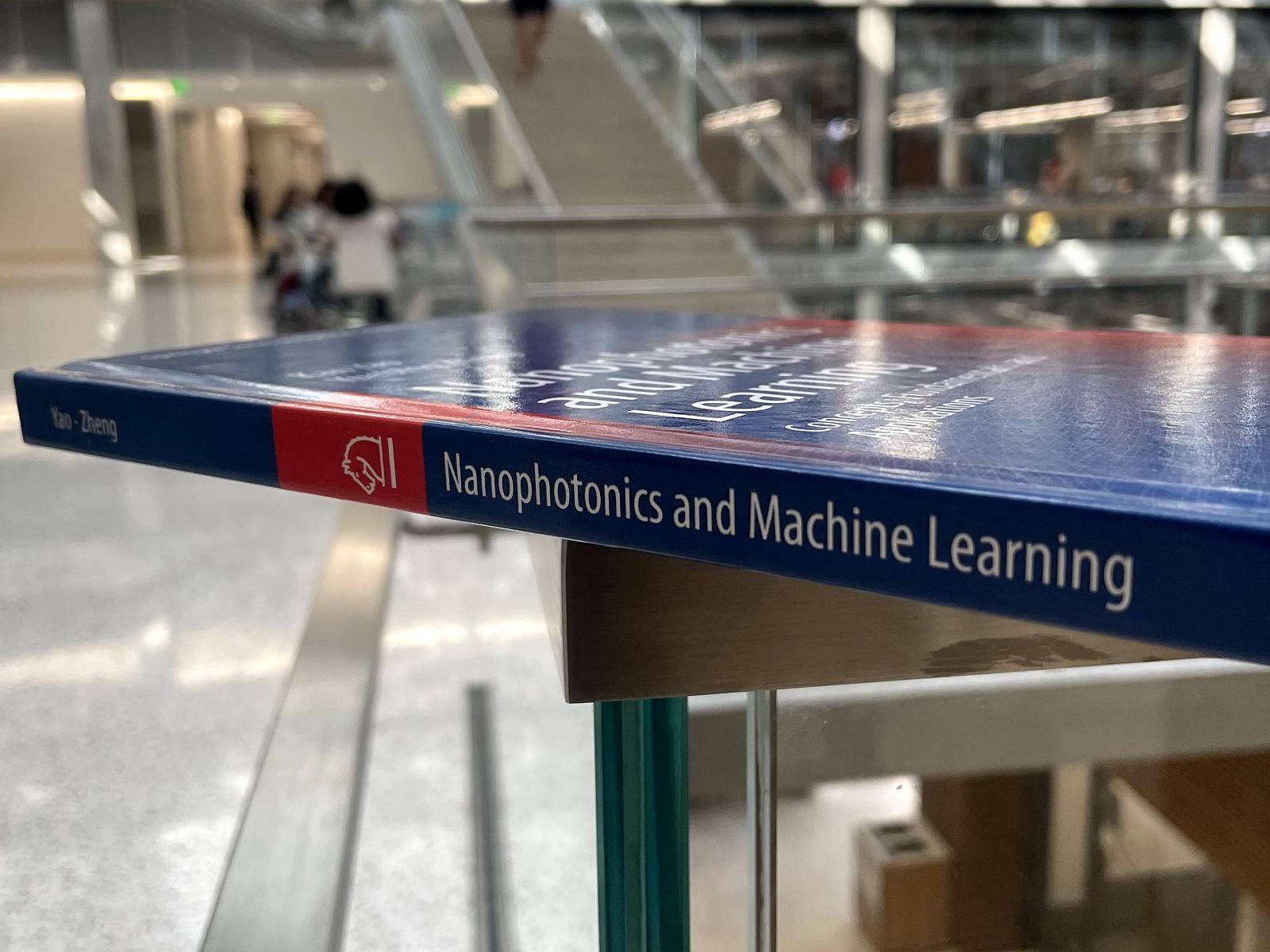How light interacts with matter is one of the most basic, yet important branches of science. A growing area in this field is nanophotonics, which studies these interactions at the smallest of scales where material building blocks begin to exhibit dynamic properties.
Recently, there has been a push to infuse next-generation technologies like artificial intelligence and machine learning into nanophotonics. But these are seemingly disparate fields, in need of a bridge between them.
A new book authored by Yuebing Zheng, an associate professor in the Cockrell School’s Walker Department of Mechanical Engineering and Texas Materials Institute, and Kan Yao, a post-doctoral researcher and Zheng’s group, aims to bridge that gap. We spoke with Zheng about the new book – titled Nanophotonics and Machine Learning: Concepts, Fundamentals, and Applications – his interest in nanophotonics and more.
You just published a new book. Tell us about it?

The goal of this new book is to introduce the basics of nanophotonics and machine learning, especially deep learning, and to help readers understand how they work and can be utilized to enhance each other. The first two chapters brief the fundamentals of nanophotonics, starting from surface plasmons and Mie resonances in modal systems and ending with representative nanophotonic devices and platforms. As preparation for the later part on applications, these two chapters are intended to provide the essential knowledge to tour the field of nanophotonics. Chapter 3 is analogous to the first two but with the subject shifted to the fundamentals of machine learning. The very basic as well as most popular models and algorithms are discussed to close the first part for knowledge preparation. Chapters 4-6 present selected examples to illustrate how the concepts can be put into effect. Whereas Chapters 4 and 5 both discuss the application of deep learning in nanophotonics, the former focuses on inverse design, and the latter spans more diverse usage. Lastly, Chapter 6 flips the coin to introduce how machine learning can be performed on nanophotonic platforms.
Why is machine learning an important part of this work?
Over the past two decades, nanophotonics has attracted rapidly growing interest and become a vibrant research field that contains both fundamental and application-driven studies. Artificial intelligence, seemingly on a totally different subject to nanophotonics at a first glance, is currently among the most promising techniques that can revolutionize the world in many aspects. After the astonishing success of the computer program AlphaGo from Deepmind defeating the top professional Go players and ChatGPT, even the public might develop the idea that a new era, where AI is competitive with human intelligence on completing certain tasks (i.e., weak AI), has come. What makes the combination of AI and nanophotonics exciting is that these two fields can enhance each other, which leads to an emerging interdisciplinary field known as intelligent nanophotonics. On one hand, the applications of AI or more specifically, machine learning, in nanophotonics include, but not limited to, inverse design of nanophotonic materials and device and analysis of nanophotonic spectra and images. On the other hand, recent advances have demonstrated that specially designed nanophotonic circuits or structures can perform machine learning tasks like inference in an improved way.
You called this book the first of its kind, why is that?
Because the backgrounds of these two fields – nanophotonics and machine learning – are very different, there is often a knowledge gap for people interested in this topic from either side. However, most existing books focus only on one of the fields. By providing the first book-level coverage of both nanophotonics and machine learning with an emphasis on their enhancement of each other, presenting the fundamental concepts of both nanophotonics and machine learning in an accessible way, and summarizing applications to nanophotonic inverse design, characterization and computing, this book aims to bridge the knowledge gap.
How did you get interested in nanophotonics in the first place?

The study of interactions between light and materials has a long history, dating back to perhaps as early as the time even when the nature of light had not been settled. As science keeps advancing, there is one line in this study that can be traced by looking at the decreasing dimensions of the materials, from optics to photonics, and all the way down to nanophotonics. Nanophotonics fascinates me for both exotic optical phenomena and wide-ranging applications. Nanophotonics studies light-matter interactions at the nanoscale, where the materials in most cases are structured into subwavelength building blocks so that exotic optical properties beyond those of bulky materials emerge. Over the past two decades, nanophotonics has attracted rapidly growing interest and become a vibrant research field that contains both fundamental and application-driven studies. Depending on the materials, geometries, sizes and arrangements of the constituent elements, nanophotonics can be categorized into several subfields, including plasmonics, metamaterials and metasurfaces, photonic crystals, photonic integrated circuits and other resonant nanostructures that can perform photonic functions. These devices operate on different mechanisms, enabling unprecedented opportunities to control light at the nanoscale for unveiling new physics and achieving fascinating applications not possible with conventional techniques.
What’s next for you in this line of research?
We have been exploiting the synergy of nanophotonics and machine learning to push the boundaries of knowledge in the fundamental understanding of light-matter interactions at the nanoscale and to innovate nanomaterials and nanodevices for broad applications in health, energy, environment, and information technology. Our ongoing projects include light-powered micro/nanorobots with swarm intelligence for non-invasive cancer therapy and environmental remediation, inverse design of nano-architected materials for high-performance passive radiative cooling in energy sustainability and for chiral sensing in early disease diagnosis, and intelligent microscopy for high-resolution imaging and classification of organisms.


